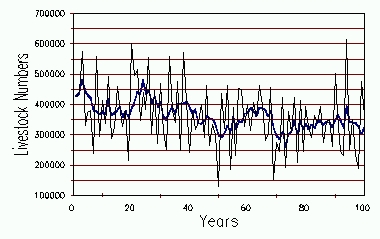Estimations of livestock carrying capacity for a single year or a series of years subject to variations in forage production.
Evaluation of forage development /management options, especially their impact on forage resources and livestock productivity at the system level.
Identification of forage limitations and critical periods and assessment of conserved or special- purpose forage requirements.
Identification of the likely occurrence of forage quality deficits and the effectiveness of management/development options to alleviate these.
Evaluation of changes in land use and/or land available for use. For example, the impact of forestry on the traditional livestock production operations of a property; land retirement and its impact on the forage resource and livestock production, and; changes in property boundaries.
Identification of optimum ratios of forage types. For example area of hay land relative to grazing land.
Evaluation of the impact of changes in livestock type and/or livestock production objectives.
Determination of optimum ratios of livestock types.
Interpretation of the relationships between livestock types (including herbivorous wildlife).
Comparison of management practices. For example comparison of a current or traditional system with alternate or “model optimised” regimes.
Monitoring of trends in forage productivity and model-estimated forage consumption within each block and paddock over a series of years (in association with a field programme of resource assessment).
Assessment of the impact of actual or forecast long-term decline and/or improvement in productivity of grasslands or pastures on livestock carrying capacity. This may include the effect of cycles of grassland renovation. The resultant trends in livestock carrying capacity may incorporate intra and inter-year variability in forage production.
Predicted decline in livestock support capacity with inter-year variability in forage production taken into account.
 |
Identification of deviations from the “normal” or “forecast” seasonal patterns of forage availability within groups of blocks or paddocks (in association with field monitoring of available dry matter).
Pastoral resource monitoring and assessment of individual forage/land units through to district or regional scale.
Determination of livestock emergency requirements.
Assessment of the impact of global climate change on pastoral systems.
